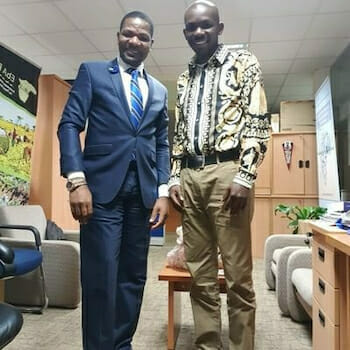
Fashioning with Waste: Turning Fast Fashion into an Opportunity in Africa
Human capital, embodied in the skills, talents, energy, aptitudes, creativity of the human race, has propelled the global north to the pinnacle of global competitiveness. Africa being the youngest continent, with 720 million young people, has a significant comparative advantage in harnessing this sovereign capital. This is a critical consideration for a continent that needs to create no less than 13 million jobs each year to be competitive. One of the areas that these jobs can come from is in the fashion industry.
Social Media Effects
With the advent of social media and the convenience of e-commerce, the popularity of the fashion industry in Africa is growing significantly. The largest segment of Africa’s e-commerce is fashion with a projected market value of $8 billion in 2020. The youth are the most significant source of this market. Studies show that in developing regions like Africa, fashion – specifically textile and clothing – is the second-largest sector after agriculture. This sector is dominated by informal sector actors and is documented as holding the potential to create jobs for millions of women and youth across the continent. Cumulatively, the market value of fashion in Africa is estimated to be $31 billion. With interest and a ready and growing market, the fashion industry in Africa stands out as an area where millions of jobs can be created for youth entering the labour market each year.
How Fast Fashion Impacts the Environment
As lucrative as it sounds, the impact of fast fashion on the environment is extreme. For example, to manufacture one pair of jeans takes close to 8,000 litres of water. This amount is equivalent to what a person drinks over seven years. A cotton shirt requires close to 3,000 litres of water to manufacture. Typically, within ten uses, these jeans and shirts are discarded. They end up contributing to the 21 billion tons of textiles sent to landfills each year. In addition, thousands of different chemicals are used to turn raw materials into clothes. The fashion industry produces 10% of global carbon emissions and consumes more energy than aviation and shipping combined.
Ripe Time for Sustainable and Climate Resilient Fashion in Africa
With increasing concerns surrounding the environmental impact of fast fashion, there is a greater push for the industry to adopt sustainable practices. A strategic shift towards sustainability is beckoning. Africa is already contributing to this push, but through circumstances, rather than by design. And this is through the second-hand clothes market. A staggering 80% of people in Africa wear second-hand clothes. While this market is fueled by unfortunate circumstances, with those looking for low-cost clothing unable to afford any better than second-hand imports, this contribution to sustainability in fashion qualifies as “re-use” in sustainability parlance. But the continent can do much better.
First, is through competitively marketing Africa’s traditional sustainable fashion practices. From bark cloth making in Uganda, to woven textiles of Nigeria and Ghana, traditional Berber weaving in North Africa, and beadwork from Maasai and Ndebele artisans in Kenya and Tanzania, sustainable fashion has been a part of the continent’s cultural heritage. These practices need to be prioritised in a new push to bring sustainable fashion to the mainstream of fashion on the continent. Yet another opportunity comes from recycling and reusing other inorganic waste generated in the continent. For example, even as the push to ban plastics is looked at from the dimension of reducing waste, another alternative can be in the form of reusing the 180 million tonnes of waste plastic bags and bottles to manufacture synthetic apparel like shoes and bags.
The fashion industry, being the second largest sector in Africa after agriculture, offers a timely opportunity for diversification of innovative climate action enterprises for African youth. Through this sector, willing youth can establish innovative climate action enterprises that will enhance their liquidity and ability to invest in other equally promising climate action enterprise areas like clean energy. Fashioning with waste as a resource is a hidden gold mine that needs to be explored.
The views expressed in this article are those of the authors alone and do not necessarily reflect those of any institutions with which the authors are associated.

